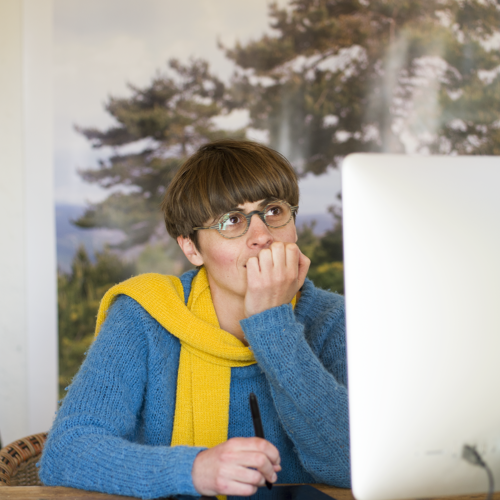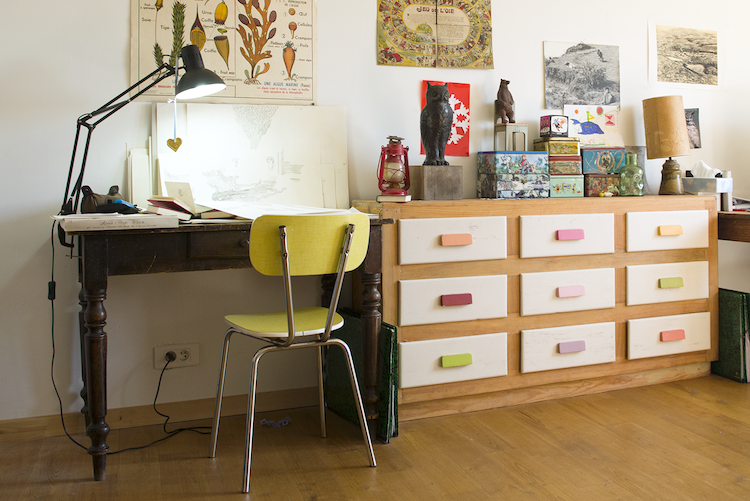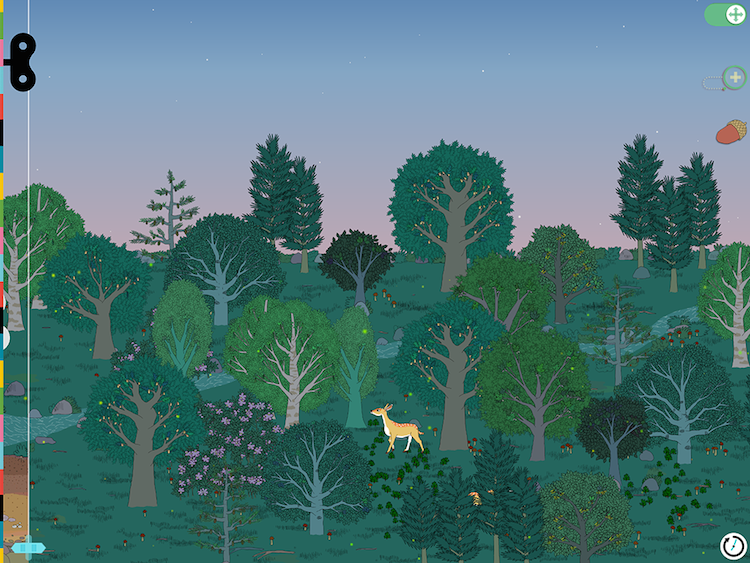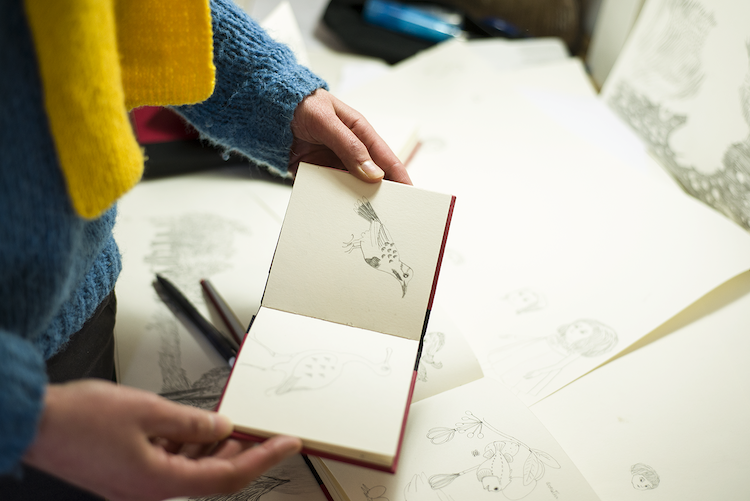A conversation with Plants illustrator, Marie Caudry (part 2)
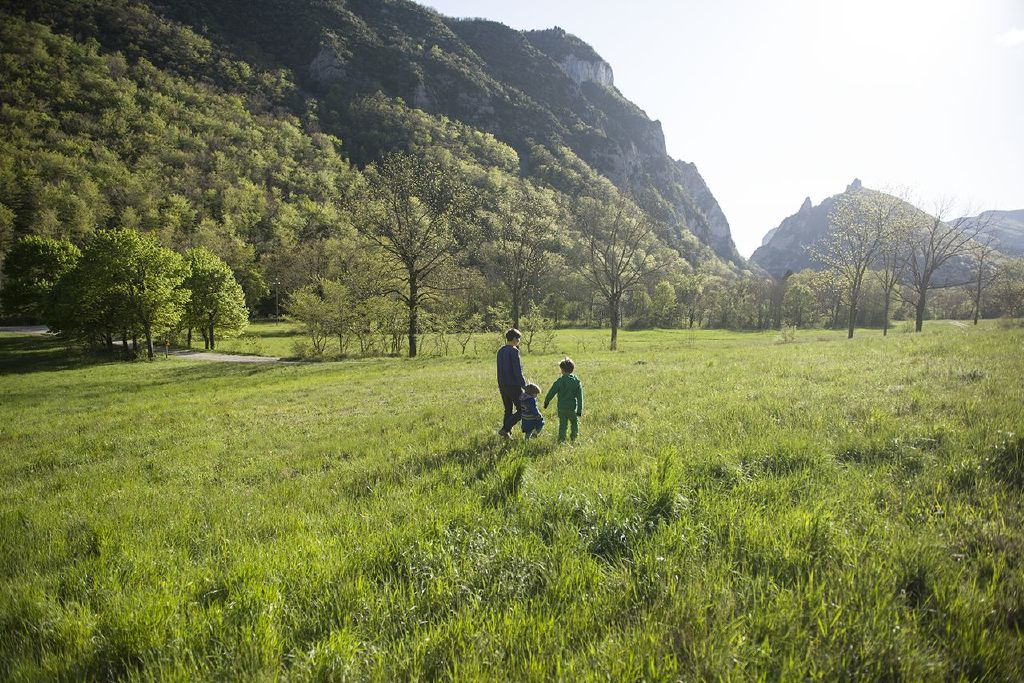
This is the second half of a two-part conversation with Plants illustrator Marie Caudry. Read the first part here.
Tell us a bit about where you live. Does this place affect your work?
I love visiting cities to enrich myself…taking in exhibitions and shows. These things are always very stimulating but I wouldn’t much like living in a city. Little by little, something deep inside of me wastes away.
For three years I lived in the isolated little mountains in central France (in the Ardèche). I have a very strong connection to this landscape, where images of a fantasy nature and a familiar beauty anchored in reality are layered together in a place where time passes more slowly than anywhere else. But then I went back down to the plains to live in a Mediterranean climate. I am less inspired by this scenery but I live in a house that’s bathed in sunlight all year round, which is important as I am cooped up inside working all the time.
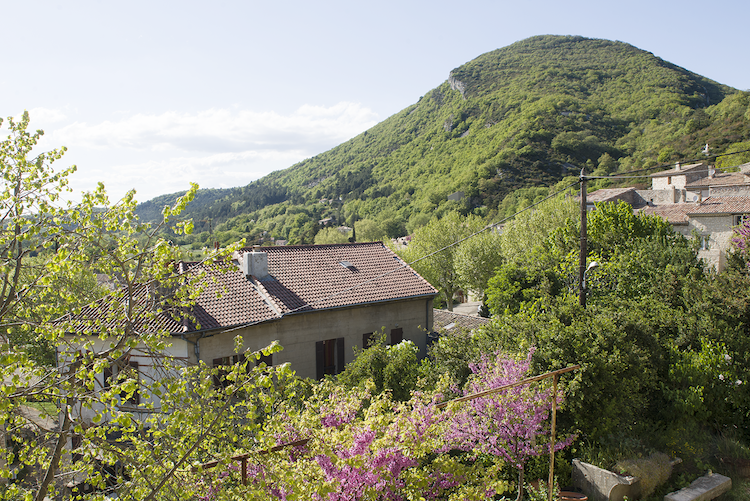
Where do you go for inspiration?
I really like the first Disney cartoons, especially the Silly Symphonies.
If I need ideas for compositions, colors, or details, I look at paintings, ancient engravings, or photos from the last century.
If you could absorb the powers from three people into your work, what would those powers and people be?
I aspire to the inventiveness of Saul Steinberg, the humor of Blake Edwards in The Party or of Jacques Tati in his films, and the charm of William Steig’s lines and texts.
What are your favorite children’s books?
Of contemporary work, I am a real fan of Aurore Caillas. I like everything in her work—her drawings, universe, stories, and her writing.
I always follow closely the works of Blexbolex, Gaëtan Dorémus, Marc Boutavant, and Beatrice Alemagna. Manuele Fior, Brecht Evens, Blutch, Daniel Clowes, Charles Burns, Lucie Durbiano, and Anouck Ricard…they impress me with every publication.
I read lots of William Steig, Claude Ponti, Kitty Crowther, and Arthur Geisert to my children because these are exactly what I want to share with them.
And from my childhood, there’s also Eloise by Kay Thompson and illustrated by Hilary Knight. It still influences me.
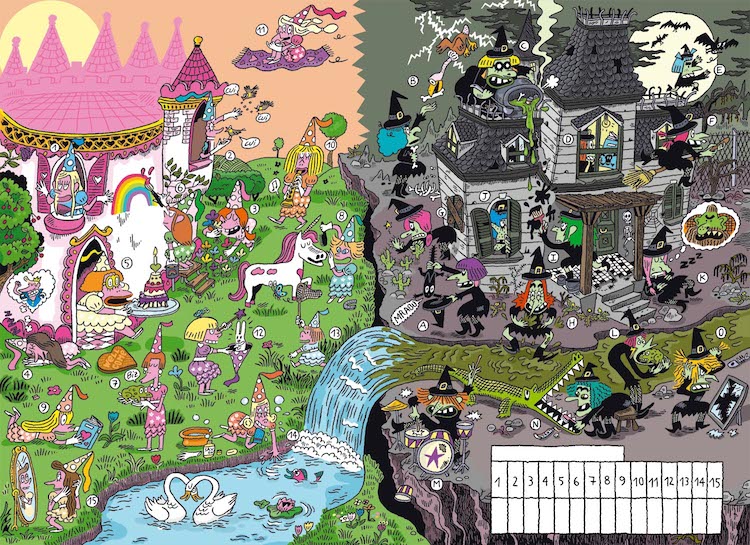 Illustration by Aurore Caillas.
Illustration by Aurore Caillas.
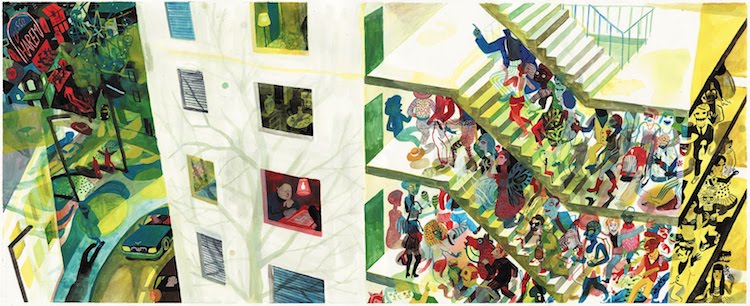 Illustration by Brecht Evens.
Illustration by Brecht Evens.
What was your most prized possession as a child?
When I was a child, I played most with Koeda-chan, this incredible surprise planet toy with three universes: Earth, space, and ocean beds. I loved the big illustrations that extended the universes. It was really incredible. As this toy belonged to one of my friends and was no longer sold in France, I suggested trading all of my dolls for it and I’ve never regretted it (neither has she…I think).
What’s on your current reading list?
Recently I enjoyed Green Dolphin Country and To Kill a Mockingbird. I’ve just finished Edith Wharton’s The New York Stories, and I’m now reading Faillir être flingué by Céline Minard. It’s a thrilling western that’s very well written—a real treat! I think I practically read only women writers without having consciously made that decision.
As a child, I was frustrated that the heroines were always in the minority or that they were only used as window dressing in adventure stories. What an injustice!
And last: what would be your dream project?
Because this project with Tinybop opens up a whole range of possibilities linked to tablet apps, I’d like to create interactive fiction—and invent an entire universe, a portal for stories aimed at children.
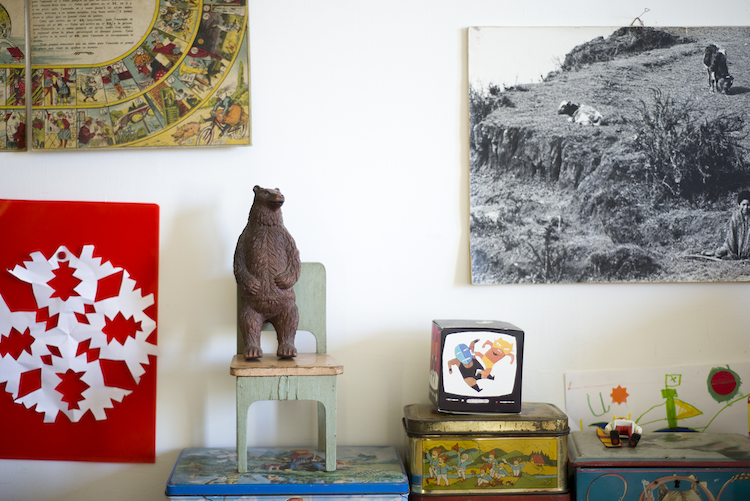
You can see more of Marie’s work on her site.
Photos by Antoine Picard.
This is the second half of a two-part conversation with Plants illustrator Marie Caudry. Read the first part here.
Tell us a bit about where you live. Does this place affect your work?
I love visiting cities to enrich myself…taking in exhibitions and shows. These things are always very stimulating but I wouldn’t much like living in a city. Little by little, something deep inside of me wastes away.
For three years I lived in the isolated little mountains in central France (in the Ardèche). I have a very strong connection to this landscape, where images of a fantasy nature and a familiar beauty anchored in reality are layered together in a place where time passes more slowly than anywhere else. But then I went back down to the plains to live in a Mediterranean climate. I am less inspired by this scenery but I live in a house that’s bathed in sunlight all year round, which is important as I am cooped up inside working all the time.

Where do you go for inspiration?
I really like the first Disney cartoons, especially the Silly Symphonies.
If I need ideas for compositions, colors, or details, I look at paintings, ancient engravings, or photos from the last century.
If you could absorb the powers from three people into your work, what would those powers and people be?
I aspire to the inventiveness of Saul Steinberg, the humor of Blake Edwards in The Party or of Jacques Tati in his films, and the charm of William Steig’s lines and texts.
What are your favorite children’s books?
Of contemporary work, I am a real fan of Aurore Caillas. I like everything in her work—her drawings, universe, stories, and her writing.
I always follow closely the works of Blexbolex, Gaëtan Dorémus, Marc Boutavant, and Beatrice Alemagna. Manuele Fior, Brecht Evens, Blutch, Daniel Clowes, Charles Burns, Lucie Durbiano, and Anouck Ricard…they impress me with every publication.
I read lots of William Steig, Claude Ponti, Kitty Crowther, and Arthur Geisert to my children because these are exactly what I want to share with them.
And from my childhood, there’s also Eloise by Kay Thompson and illustrated by Hilary Knight. It still influences me.
 Illustration by Aurore Caillas.
Illustration by Aurore Caillas.
 Illustration by Brecht Evens.
Illustration by Brecht Evens.
What was your most prized possession as a child?
When I was a child, I played most with Koeda-chan, this incredible surprise planet toy with three universes: Earth, space, and ocean beds. I loved the big illustrations that extended the universes. It was really incredible. As this toy belonged to one of my friends and was no longer sold in France, I suggested trading all of my dolls for it and I’ve never regretted it (neither has she…I think).
What’s on your current reading list?
Recently I enjoyed Green Dolphin Country and To Kill a Mockingbird. I’ve just finished Edith Wharton’s The New York Stories, and I’m now reading Faillir être flingué by Céline Minard. It’s a thrilling western that’s very well written—a real treat! I think I practically read only women writers without having consciously made that decision.
As a child, I was frustrated that the heroines were always in the minority or that they were only used as window dressing in adventure stories. What an injustice!
And last: what would be your dream project?
Because this project with Tinybop opens up a whole range of possibilities linked to tablet apps, I’d like to create interactive fiction—and invent an entire universe, a portal for stories aimed at children.

You can see more of Marie’s work on her site.
Photos by Antoine Picard.
Parlez-vous Français? Read Marie’s interview in French.
